Wegmans faces global challenges to become regional supermarket power
Say its name in a certain crowd, and you'll hear delighted sighs. Mention it to someone who no longer lives nearby, and you’ll trigger wistful, faraway glances. Bring it up in a town without one, and folks will ask: When's it our turn?
The word: Wegmans.
If you know, you know.
What began in 1916 as the Rochester Fruit & Vegetable Company is today a regional supermarket juggernaut, with 109 stores in eight states and the District of Columbia.
And more are on the way. Seven new Wegmans stores are slated to open in the coming years, including the chain’s first in Connecticut (in Norwalk), and one in New York City’s Greenwich Village.
Why all the fuss about, well, a grocery store? Just ask someone who lives (or even once lived) within driving distance of those 109 locations.
It's the kind of adulation reserved for few food firms. Think California's In-N-Out. Or Texas-based travel center Buc-ee's, which has spread its country-store-gas-stations across the Southeast and has been described as "an experience that sells gas."
Wegmans has a cult-like following akin to Trader Joe’s, where customers lobby for stores to open near them. Like Trader Joe's, Wegmans doesn't have shoppers, so much as followers: They're "Wegmaniacs" who eagerly await new store openings and wax rhapsodic about their favorite store items.

Buffalo chicken pizza. Grandpa’s sauce. Carmelized onion hummus. Cannoli dip and chips. Cave-ripened cheeses.
Folks in Rochester proudly squire visitors to their preferred local store location. Here, it's part commerce, part attraction, part bragging right.
How did a company that started with John Wegman pushing a cart laden with fruit and vegetables down West Main Street in Rochester — as World War I raged in Europe — grow to 52,000 employees and annual sales of $11.2 billion last year?
Danny Wegman, the chairman of his family’s business, said it comes down to treating people right, whether that’s giving a local merchant a place to sell their product, making sure a time-crunched parent can put a quick dinner on the table, or paying a Wegmans staff member enough to do the same.
That bedrock company value has been coupled with an openness to change that borders on obsession. Wegmans, its leaders say, is always learning, always pushing, always adapting.
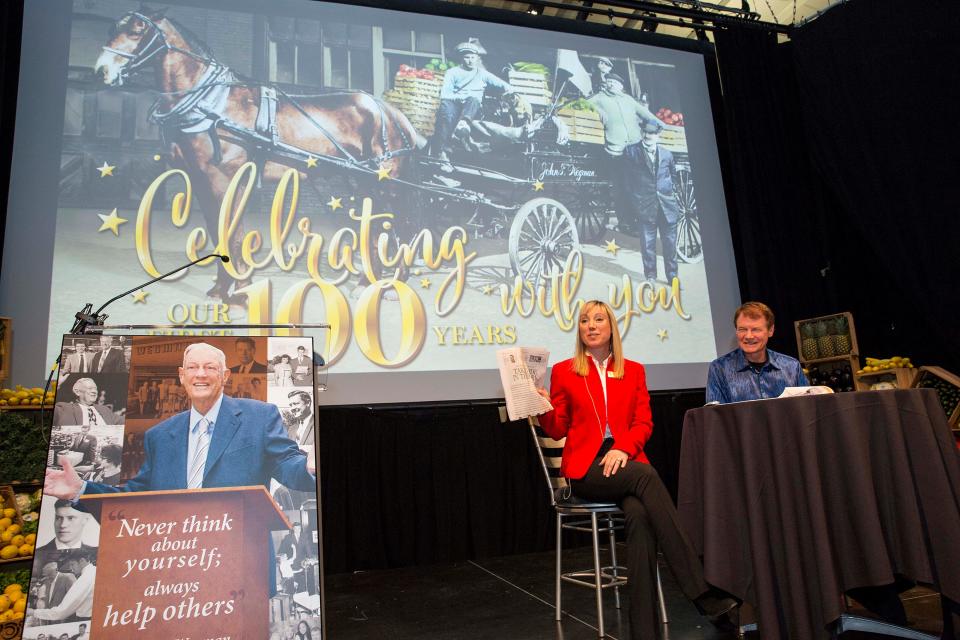
There may never have been a time in the past century that change has been more necessary than now. American society and commerce have been hit hard by colossal challenges and shifting priorities in recent years, and Wegmans and the grocery industry as a whole are no exceptions. Consider:
The COVID-19 pandemic altered how we look at grocery stores, with contactless purchases and social-distancing and one-way grocery aisles. It also recast the traditionally minimum-wage supermarket worker as essential.
Climate change and sustainability concerns put pressure on grocers not only to have environmentally conscious business practices, but also to tell their customers what those practices are and to expect their input.
Inflation has led to belt-tightening, driving customers to make more careful choices in the grocery aisle — and sometimes choices about where to shop altogether.
Racial-equity conversations have put a focus on grocery deserts and where supermarkets are, and aren't.
The Great Resignation has made worker shortages a reality. Keeping workers happy is vital to filling those store shelves.
Wegmans has built its first hundred years on a corporate culture of change. But how Wegmans navigates these new challenges will determine how it steps into its second century.
WEGMANS AND THE WORLD
Over the coming months, the USA TODAY Network will explore how Wegmans is adapting to each of these facets of our changing world. We'll learn insights from Wegmans workers, sit in on a rare interview with top Wegmans leadership, dive deep into the chain's location decisions, visit one of the newest and most unlikely grocery store spots, find out how prepared foods get a second act, learn the story behind the stores' iconic tote bags. Along the way, we'll reveal how Wegmans' business practices affect our communities, its workers and the environment.
Constant adaptation
Wegmans has been able to set itself apart despite being buffeted by the same economic forces that saw national chains such as A&P go under in the razor-thin-profit-margin grocery sector.
The chain's 106-year progress, its expansion strategy and product rollout, is predicated on two things: being ever-present and being open to ideas.
When John F. Wegman Jr. set up shop at 73 West Main Street in 1916, his storefront's next-door neighbor was Fay's Vaudeville, later renamed the Capitol Theatre, which billed itself as "the biggest show in town." Nowadays, with Fay's and the Capitol long gone, Wegmans holds that title.
As a regional player, Wegmans has been nimble enough to react to the times, and to reflect changing customer appetites on its shelves. President and CEO Colleen Wegman called it “our learning culture and our commitment to continuously improve.”
“If we didn't have ideas bubbling up from all over the company, that wouldn't happen,” she said.
Change looks like grab-and-go dinners, like organic produce grown on Wegmans own farm, like stable pricing on pantry staples.
It also looks a lot like the Ultimate Chocolate Cake, the recipe for which came from an employee after an in-house contest 17 years ago. The chain asked its employees for their best chocolate cake recipe. Dozens of cakes were submitted for regional competitions before winnowing the list down to a final 16. Then a panel of judges, including Food Network star Gale Gand, made their selection. The takeaway: Often, employees have the answers.
“It’s still the best chocolate cake I’ve ever had,” Colleen Wegman said.
Change can also look like the blurring of grocery store walls. On a recent visit to Wegmans store in suburban Harrison, New York, the produce section had fresh mozzarella next to the vine-ripened tomatoes, with no need to search in the cheese section.
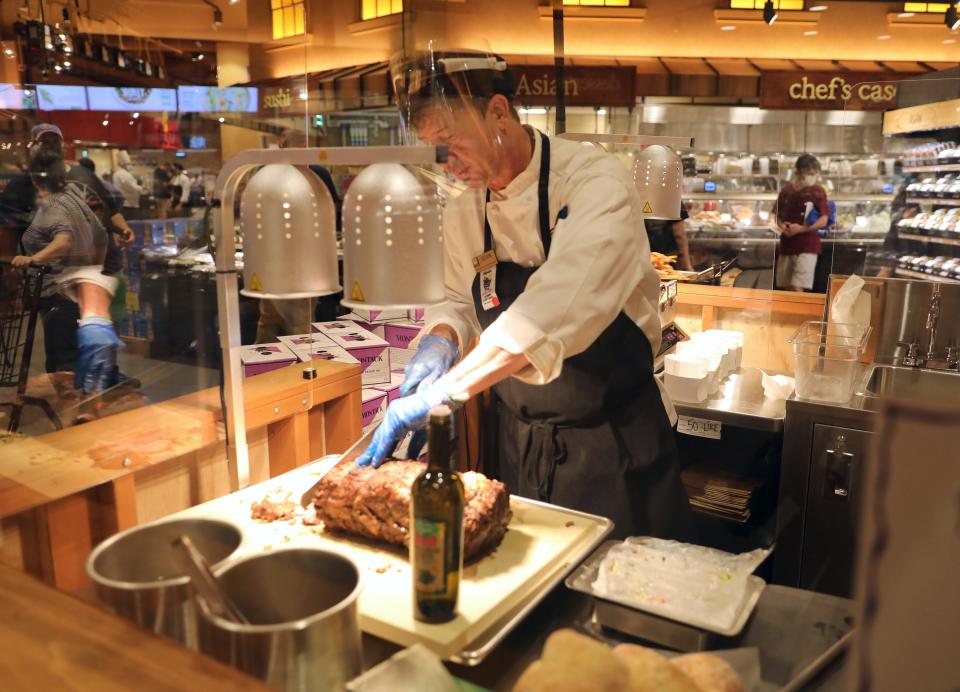
“Ideas can come from anywhere, and they do,” Colleen said. “They come from literally every area of the company where people will contribute to what might be relevant and exciting for them in a given season. And then we try to put that together as a group and make sure it's easy for our customers to find.”
Board Chairman Danny Wegman, Colleen's father, said a Wegmans corporate epiphany was sparked by a speech that was never given.
“Back in 1967, my dad had written a speech that he was to deliver over in Thailand. But the fella who was speaking ahead of him took so long that my dad was never able to deliver the speech. Fortunately, I found it about 10 years later, in about 1977, and I loved it. It said basically to give the customer the choice they don't have at the moment, and that that was the only reason to be in business.”
Wegmans took that idea and ran with it, opening three new Buffalo-area stores in 1977 alone and making food preparation and service what set Wegmans apart.
“We did this through sampling recipes, food culture, and we continue that to this day,” Danny Wegman said. “That was a change in our company's way of operating, and it really was an intensifying way. But it helped us be different from the rest of the market, which we knew we needed to be.”
Supermarkets are a reflection of society, for good or bad. If you are what you eat, it follows that you are where you shop, making the supermarket an aspirational American enterprise. But the stores that are available to you are also who you are. That's why people get upset when they consider themselves Trader Joe's people and there's no Trader Joe's nearby.
For all the evolution — and there has been plenty over more than a century in business — Danny Wegman takes no small pride in the fact that, while his grandfather Walter would marvel at the scope of the modern operation (and likely wonder what a Buffalo chicken was), he would still recognize the “basic businesses” at work.
“It’s farming, cooking, running retail stores,” he said. “Most of what we do does not require a Ph.D. It requires hard work, dedication. And many of our folks can begin in the dish room and end up being an executive chef. That's the best part of our business.”
'We're a family'
Ask Danny and Colleen Wegman — he’s the father chairman and she’s daughter president and CEO — about the chain's evolution, and they instantly turn to a word that comes up in varying forms a dozen times over the course of an hour-long interview.
“We're a family,” Danny said. “We can work with local people and they're families, too, in most instances. It is just how we grow our business.”

Colleen said their weekly road trips each Friday to visit their stores, talking to employees and customers about their Wegmans experiences, is the highlight of a Wegmans week. The chain is still regional enough that stores are within a day's drive of Rochester.
“We call them 'family visits' on Fridays, because it really does feel like a family in every one of our stores and every one of our workplaces,” she said. “We spend more time with each other at work than we do with our own families. It ends up being a real family culture.”
Danny’s father, Robert Wegman, took over the company in 1950 and was chairman until his death in 2006.
“The very first thing my dad did was raise wages,” Danny Wegman said. “The reason he did this was because people in our company would not be able to take care of their family working at Wegmans, and they'd want to go off and work at a company like Kodak or some other company. He just didn't believe that that was right and wanted people to be able to have a career at Wegmans."
Danny’s takeaway from that: “Our people are very important to us.”
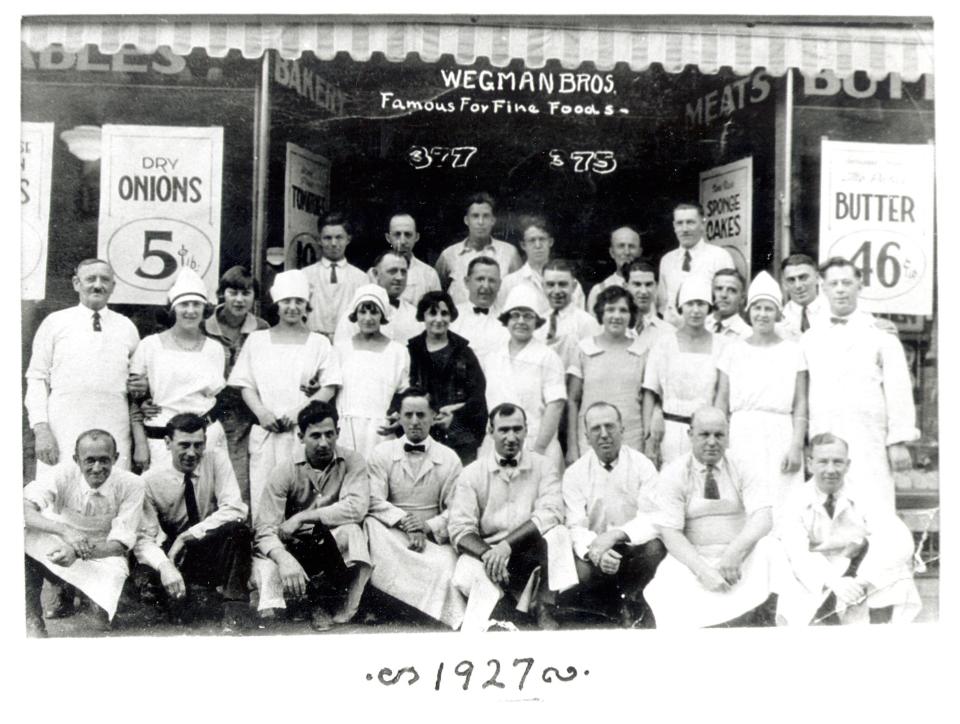
Danny Wegman talks in superlatives, his glass overflowing in sort of a gee-whiz homespun sort of way.
When he sought approval from Canandaigua to build a barn in 2007, he was told he couldn’t build a big barn, unless he was going to have a farm.
“I said to them, 'Oh, I didn't tell you? We're going to have the most wonderful farm that's ever existed,'” he recalled. “And that's how we started our organic farm.”
Openings, closings, 'resets'
Wegmans is in a constant state of reinvention: opening new suburban stores after a flurry of supersizing others and abandoning underperforming areas.
It may be a family business but it is still a business, and Wegmans is not sentimental: The chain has closed 27 stores, including its original fruit and vegetable market, shuttered in 1955. The last Wegmans to close its doors was on Pond Street in Syracuse, a location that was a Wegmans for 42 years before closing in 2012. It is now owned by Tops Friendly Markets.
The decision to close a store comes down to one word, Colleen said: volume.

“We look at, ‘Where can we go where we can do enough volume to be able to support all the great fun things that we want to be able to do?’” she said. At Pond Street, “we didn't have the volume there.”
“We used to have larger stores. We're trying to go smaller again and we're finding we're able to do the same amount of volume in a smaller store. So we're trying to find that right balance.”
That balancing act has led Wegmans to the suburbs, at the expense of urban Rochester neighborhoods.
The Culver-Bay store and downtown Midtown Plaza location each closed in 1995.
The Mount Hope store closed in 2003.
The Driving Park store closed in 2007.
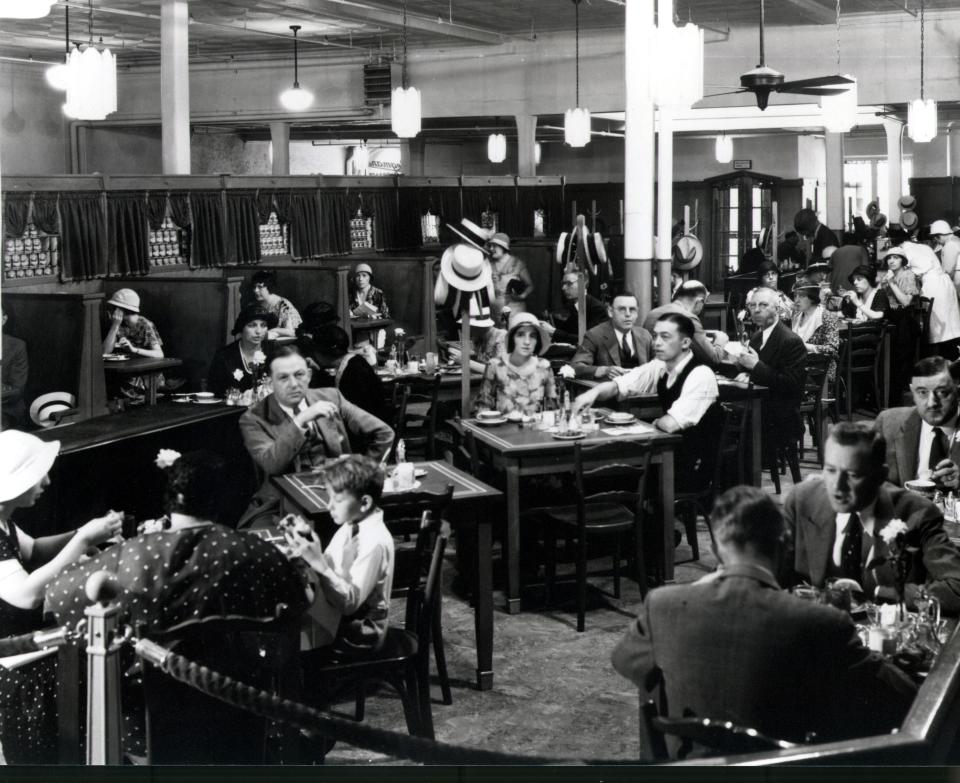
Wegmans had nine city locations in 1971, but only one remained by 2007: the upscale East Avenue store. Built in 1962, that store underwent what has become a favored Wegmans practice: upsizing. The original 41,321-square-foot store was more than doubled, to 86,897-square-feet, in 2013.
Some locations Wegmans falls in love with, “resetting” stores on the same plot of land and supersizing them.
The Perinton Plaza store opened in 1967 at 18,000 square feet. In 1974, it was expanded to 54,000 square feet. In 1987 to 89,603 square feet. In 2016 to 122,000 square feet.
In the Syracuse area, the DeWitt store followed a similar trajectory to become Wegmans largest: 67,077 square feet in 1969; 123,500 in 1995; and 152,273 in 2017.
Some stores don’t get the supersize treatment and are shuttered, prompting criticism that Wegmans favors wealthy suburban shoppers to urban ones.
Among the new store locations slated to open in the next five years:
Norwalk, Connecticut;
Rockville, Maryland;
Astor Place, NYC, New York (second half of 2023);
Lake Grove, Nesconset, New York;
Holly Springs, North Carolina;
Yardley, Lower Makefield Township, Pennsylvania;
Reston, Virginia (Feb. 1, 2023).
Buffalo shooting brings locations into focus
This came into focus after the racist massacre at a Tops Friendly Market store on the East Side of Buffalo in May. The store’s closure created a food desert of sorts, with local residents having to shuttle to Tops stores farther away.
In the days after the shooting, Pastor Julian Cook of Macedonia Missionary Baptist Church on the East Side talked about the way forward for his congregation, and included a grocery list of his own, make that a grocery-store list.
“I would love to see a Wegmans in this community,” he said. “Why not a Wegmans? Wegmans is everywhere else. The headquarters of Wegmans is right up in Rochester.”There is a Wegmans store 4 miles away, near the SUNY Buffalo campus. And in West Seneca, 7 miles away. And Amherst, 8 miles away. And in Williamsville, 13 miles away. In East Buffalo, beyond Tops, grocery shopping is for travelers, the pastor said, his family included.
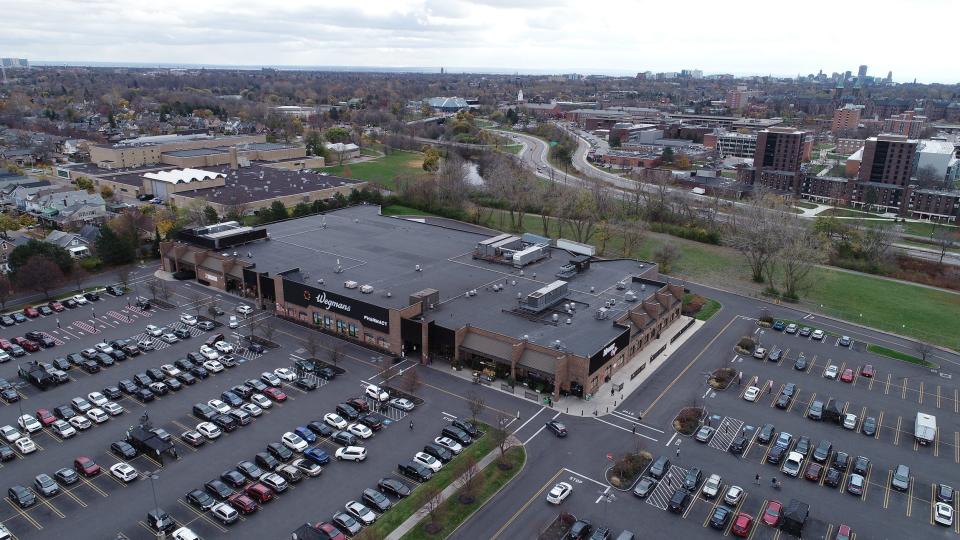
“We travel to grocery shop because there is a quality that comes with Wegmans,” he said. “But we shouldn’t have to.”
Colleen Wegman called the shooting a horrible tragedy.
“Many of our employees live in that neighborhood, so we understand. We believe everyone deserves our best and we can provide our best where we are in Buffalo because it supports the volume that I discussed.”
She said Wegmans offered free delivery to East Buffalo in the aftermath of the shooting, “and that hopefully was helpful in some way.” She added that the company is “always looking at how can we help with food access and food security and how do we help provide great tasting, healthy meals for all people in the markets that we serve.”
'Let's see if it works'
The regular refreshing and “resetting” of stores is also a chance to alter changes that have been made.
This year, Wegmans phased out designated Nature’s Marketplace areas of its stores, a sort of health-food-store within the store that Colleen championed in 1994, first in the chain’s Henrietta location.
"It was something that I had a passion for 30 years ago,” she said. “I remember my grandpa saying, ‘Jeez, those products look a little strange to me, but go ahead, try it. Let's see if it works. If it doesn't, though, change course, but try things and learn from them.’”
There have been other changes that have fallen away, including the pandemic-prompted free Wegmans SCAN app that allowed customers to scan bar codes as they shopped to make checkout faster at a contactless self-checkout register.
It was introduced in 2020 and shut down in September 2022 when it became clear that the app proved too convenient for people who bagged their own groceries without scanning them. While Wegmans wouldn’t reveal how much theft was involved, the announcement of its closure said: “The losses we are experiencing from this program prevent us from continuing to make available in its current state.”
“We got into that so quickly because of the pandemic and there was a demand for contactless shopping," Colleen Wegman said. "We jumped in fast and we rolled it out across our whole company because we really wanted to help. I'm really proud we did that as quickly as we did. And I'm really proud we got out of it as quickly as we did.”
It ended the program in a distinctly Wegmans way: As a “sign of gratitude” from the company, Wegmans applied a $20 coupon to each SCAN customer’s loyalty program accounts.
Spreading the word
How does Wegmans communicate all of this?
The email arrived with the subject line: “The Story Behind Our New Chicken.”
New chicken?
Members of Wegmans' loyalty program, Shopper’s Club, opened their weekly “Our Fresh News” email earlier this fall to learn that the company had important news “about our rotisserie chicken.”

The store’s current bird supplier was getting out of the chicken game, readers learned. But Wegmans had done its due diligence “to evaluate our suppliers that could give us a higher-quality product with superior taste, while meeting our high expectations for animal welfare and sustainability. Based on inflation and current market conditions, we knew our cost would likely change regardless of who we selected — and we wanted to partner with someone we could trust.”
The new trusted partner is Bell & Evans Farm, readers were told, chosen because “each of their chickens is respectfully cared for, giving it superior taste, juiciness, and tenderness” without antibiotics.
Wegmans spokeswoman Deana Percassi said the “Our Fresh News” emails have been going out for more than a decade, becoming “one of the best ways that we have to communicate changes like this to our customers.”
The email, signed by Colleen Wegman, closed with: “We can’t wait for you to try our new chicken and for it to become one of your new family favorites.”
At Wegmans, even the chicken dinner gets its turn for a little re-invention.
The team behind the project
Reporting: Emily Barnes, Kayla Canne, Edward Cuevas, Diana Dombrowski, Steve Howe, Matthew Korfhage, Peter D. Kramer, Jeanne Muchnick, Erin Nolan, Tom Passmore, David Robinson, Tracy Schuhmacher, Maria Montero Silva, Asher Stockler, Adria R. Walker, Tom Zambito
Photography and videography: Peter Carr, Kate Collins, Daniel DeLoach, Shawn Dowd, Jamie Germano, Seth Harrison, Tina Macintyre-Yee, John Meore, Tania Savayan, Mark Vergari
Data visualization: Janie Haseman, Sean Lahman, Javier Zarracina
Editing: Kristen Cox Roby, Sarah Taddeo, Katie Sullivan Borrelli, Jamesetta Walker, Maryann Batlle
Multimedia editing: Elaine Ruxton
Digital design and development: Jennifer Williams, Kyle Omphroy
Social media, engagement and promotion: Maria Birnell, Justice Marbury, Marili Vaca, Bill Wolcott
This article originally appeared on USA TODAY: Wegmans faces global challenges to become regional supermarket power

 Yahoo Movies
Yahoo Movies 
